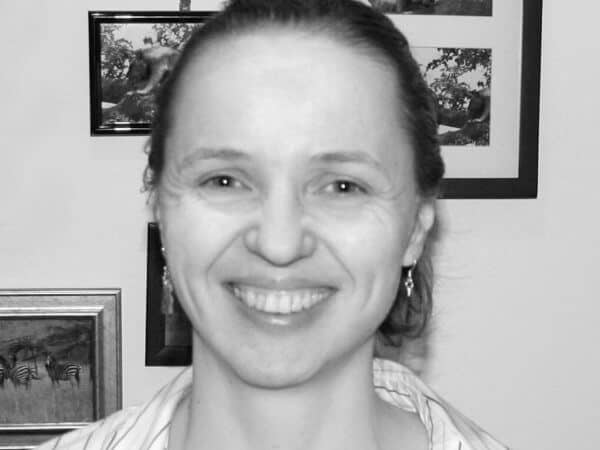Sedentary time, sitting time, physical activity, how it all affects our well-being and longevity. What does research show and what does the World Health Organization recommend? How much is good and how much is necessary? The countries in which people are the most active and those where they choose a sedentary lifestyle, obesity, ailments linked to lack of exercise and much more. Find out in this interview with Professor Ulf Ekelund.
Professor Ekelund, you have invested a fair amount of effort to determine the association between sedentary behaviour and chronic conditions such as sitting and even mortality. What were your findings?
Sedentary behaviours such as sitting or reclining in combination with low energy expenditure (you can be very active and expend large amounts of energy while sitting, while cycling or rowing) are highly frequent. In many societies throughout the world, most individuals spend more than half of their time awake sedentary.
Research on sedentary behaviours originated from Jeremy Morris classical studies comparing bus drivers with conductors in London in the fifties. He observed that drivers were much more prone to coronary heart disease compared with conductors simply because of lower levels of physical activity and more sedentary work. During the last 10 to 15 years the research into sedentary behaviours and their detrimental health effects have accelerated. We now know that prolonged sitting is associated with increased risk of premature death and other non-communicable diseases such as cardio-vascular disease and Type 2 diabetes.
However, the key question is whether physical activity can mitigate the detrimental effects of too much sitting? And, if so, how much physical activity is needed.
We addressed this in a publication in The Lancet, where we included data from 13 studies comprising of more than 1 million individuals and observed that sitting was strongly related to premature death among those with low levels of physical activity (equivalent to less than five minutes of brisk walking every day). In contrast, among those highly active, who reported about 60 to 70 minutes of moderate intensity physical activity every day (brisk walking), the association between sitting time and risk of death was eliminated.
This suggests that sitting per se is not associated with higher risk of death if you are highly physically active. We subsequently observed the same associations when we examined the associations between sitting time and cardio-vascular and cancer deaths, also suggesting that sitting is unrelated to risk of premature death in those who are active – a study you can find here.
These findings have partly contributed to the current US recommendations for physical activity and the upcoming World Health Organisation (WHO) 2020 recommendations of physical activity, sedentary behaviours and public health.
How much of physical activity in terms of exercise would be recommended for an average young individual over each week?

The current physical activity recommendations for those older than 18 years recommend that all individuals should limit their amount of time spent sedentary (without any quantitative time recommendation) and do 150 to 300 minutes of at least moderate intensity physical activity every week (moderate intensity is an activity that makes you breathe harder and sweat – examples are brisk walking or cycling). For those younger than 18 years, the current recommendations from WHO and other national and international organisations recommend that youth below 18 years should engage in an average 60 minutes of moderate intensity every day.
For those more interested in these recommendations, I strongly recommend checking out the WHO web page for the update of most recent global recommendations being released on November 26th 2020.
As a general recommendation I would emphasize ‘Move more and sit less – the more the better’.
Does starting young with exercise aid towards avoiding chronic ailments at a later age?
This is an important question, which currently does not have a clear-cut answer. What we know is that it is never too late to start exercising and the benefits are huge. Research has shown that exercise has beneficial health effects also in those aged 80 years and older and exercise can be described as the best-known medication without any side effects. Regular physical activity is not only associated with lower risk of premature death and diseases but also reduces the risk for depression and other mental health problems, reduced the risk for hypertension, dyslipidemia (high levels of fat in the blood) and other metabolic disturbances. In fact, research has shown that exercise and physical activity improve the immune function and may reduce the risk for infections, including the current COVID-19 virus.
We also know that those with higher fitness in adolescence have lower risk of developing type 2 diabetes in adult life and likely less risk of premature death. However, higher levels of physical activity and exercise throughout life rather than high fitness may also explain this in youth. Without doubt, being physically active throughout life is associated with greater health and well-being.
In layperson’s terms, what is the relationship between sitting time and all cause mortality?
In a recent study published in the BMJ, we measured physical activity and sedentary time by an accelerometer, which is a device that measure movements and therefore can be used to estimate time spent sedentary and in different intensities of physical activity.
In that study we found that all intensities including light intensity (e.g. normal household chores) were associated with risk of death.
However, for sedentary time, the risk was only statistically increased above 9.5 hours per day suggesting that lower amounts of sedentary time did not increase the risk for premature death.
Importantly, as little as about 25 minutes of moderate intensity physical activity (again equivalent to brisk walking) reduced the risk of premature death by more than 50%.
Taken together, being physically active and promoting physical activity is likely a more potent public health message compared with reducing sedentary time.
In several parts of the developed world, childhood obesity has become a cause for worry. What are the risks linked to this and what can be done to offset the effects?
Obesity including childhood obesity is a multifactorial issue and there is no magic bullet that will solve the obesity epidemic.
Childhood obesity may have negative effects already in childhood both clinically and mentally.
Childhood obesity is linked to various health conditions, such as high blood pressure and impaired lipid and glucose metabolism (that may affect the blood vessels and risk for later cardiovascular diseases and type 2 diabetes) and increases the risk of bullying.
Many obese children become obese adults where the medical consequences are even more pronounced.
As obesity is a multifactorial issue including an ‘obesogenic’ environment characterized by a society where physical activity is engineered out of daily living and by easy access to high caloric foods and drinks the solutions are multifactorial.
These may include taxes on unhealthy food items, bans of unhealthy food adverts in media and structural changes in the environment such as improving facilities for active transport.
In which countries are the people most active?
According to a paper published in Lancet Public Health (Guthold et al, 2018) the highest levels of physical activity in adults aged 18 years and older is observed in Oceania, South-east Asia and sub-Saharan Africa.
The lowest levels are observed in Latin America, Caribbean and high-income Western countries.
Given the long working hours humans put in doing their desk bound jobs, what in your opinion should they do to counteract the consequences?
Any physical activity is better than none.
If you must spend large amounts of time by your desk, make sure you take regular activity breaks.
This may include a 5-minute break every hour doing some exercise or walk the stairs.
Make sure you are regularly physically active either during your leisure time or a means of active transportation (e.g. walking and cycling).
If you are about to start exercising, do something that you enjoy and find meaningful which will increase the possibility for success.
Increase the activity gradually and don’t be concerned if you may miss out on an exercise session. The best exercise is the exercise you do.
On account of social media, adolescents and teens in particular are becoming relatively less active. What do your observations say about the impact on their health?
First, we do not have strong evidence that physical activity has declined by time.
This is because we do not have any good data on physical activity and sedentary behaviors from the past.
However, we know many young people spend large amounts of time awake sedentary. As I alluded to above, sitting for many hours without breaks is detrimental, although more so for adults and the elderly than for young people.
I encourage all youth to be physically active daily. It doesn’t have to be regular exercise but make sure you do at least brisk walking for a total of 30 to 60 minutes daily.
If you already participate in sports and more vigorous exercises continue doing so.
The key here is doing something enjoyable, do it regularly and do it with your friends if you like.
Referring only to the developed world, would it be correct to say that schoolchildren are more active in the villages compared to those living in cities?
I don’t think we have any strong evidence for this statement. The data I am aware of do not suggest a marked difference between urban and rural settings.
What is clear, however, is that boys are more active than girls already from a very young age and that physical activity declines by age already starting at the age of 8 to 10 years.
Apart from obesity, are there more cardio and respiratory issues related to the young now compared with the young of the previous generations?
In general, young people are the healthiest of the population and the major causes of hospitalization and death in this age group are due to accidents, substance abuse and suicide.
Health is also strongly determined by socio-economic factors and improving population health is strongly associated with equality.
Unfortunately, in many parts of the world we are seeing more diversity and inequality.

Tell us about your self-motivation and those who inspired you into your area of work?
I have, since a young age, been curious and fascinated by systematically understanding the world. Combined with my passion for sport and being trained as a physical education teacher I was fortunate to be able to combine my interest in research and physical activity in the area of public health and epidemiology.
My background might be slightly different from many other academics.
I was trained in physical education and biology in Sweden and then worked as a teacher for almost seven years when I was recruited to lecture in exercise science at my alma mater.
I soon realised I needed a PhD to obtain a permanent position at the University.
I had the opportunity to enroll in the graduate programme at the Karolinska Institutet and conducted my PhD on assessment of energy expenditure and physical activity in adolescents.
In the late 90-ties the development of device-based methods for assessing physical activity, such as accelerometry, became available for population-based research and I used these methods in my dissertation.
While doing my PhD I was fortunate to be involved in some international research projects. These projects were opportunities to get to know some of the major players in this field. After finishing my PhD, I had the opportunity to work at the Medical Research Council Epidemiological Unit, University of Cambridge. What was
assumed to be a one-year experience ended up as an almost 10 years in Cambridge. Working in an outstanding environment at one of the most prestigious Universities in the world was an exponential learning curve.
My research shifted and widened from being focused on the assessment of physical activity into a more epidemiological approach to understand the role of sedentary time and physical activity for preventing non-communicable diseases across the lifespan and how to translate these findings into public health action.
Our readers are mainly the youth in different parts of the world who look up to achievers, such as yourself, for inspiration. What would be your advice for them?
Choose a path you will enjoy and believe you can achieve what you set out to achieve. Never stop being curious and don’t forget there are multiple ways to reach your goal. In the long run, you will learn more from travelling the long road and follow your own path rather than taking short cuts set out by others.

Professor Ulf Ekelund obtained his PhD from Karolinska Institutet, Stockholm, Sweden in 2002. This was followed by a one-year post doc position at the Medical research Council Epidemiology Unit, University of Cambridge, UK. He was appointed as investigator scientist and group leader at MRC Epidemiology Unit, between 2003 and 2012. He is member of the editorial board for Medicine and Science in Sport and Exercise and Journal of Physical Activity and Health. He is also Fellow of the American College of Sports Medicine and was international trustee on the executive board for ACSM. His research focuses on the associations between sedentary time, physical activity and non-communicable diseases throughout the life course. He has published over 300 research papers and articles.
Photos: From the Archive of Professor Ekelund / Shutterstock
Want to read something else from one of our experts? Head here for more intriguing stories.
Kurdish Human Rights Hero, Rez Gardi: Wanting More Than Safety Seemed Ungrateful
Support us!
All your donations will be used to pay the magazine’s journalists and to support the ongoing costs of maintaining the site.
Share this post
Interested in co-operating with us?
We are open to co-operation from writers and businesses alike. You can reach us on our email at [email protected]/[email protected] and we will get back to you as quick as we can.











